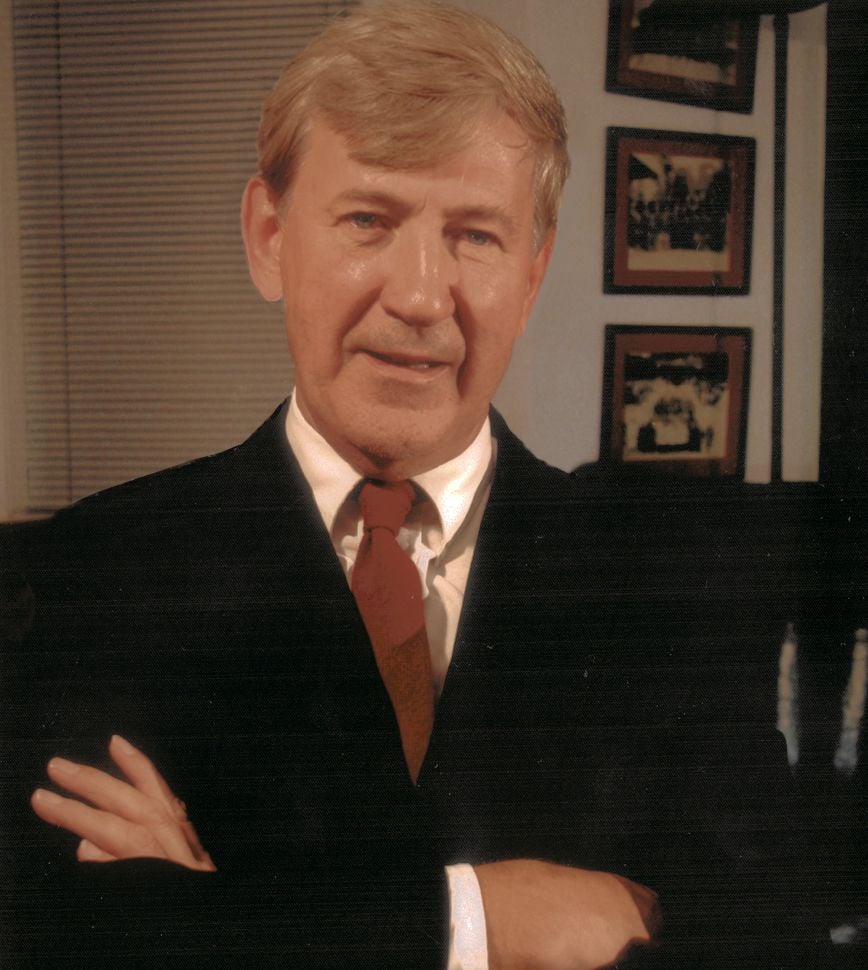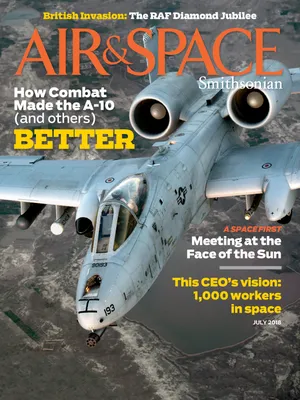Yanks to the Rescue
As American airmen helped win World War II, they also influenced British culture.
/https://tf-cmsv2-smithsonianmag-media.s3.amazonaws.com/filer/61/12/6112ca6c-72b5-4646-946e-56734c8eaf0c/060415-f-0000g-002.jpg)
Kevin Wilson, a former newspaper reporter in England, has written Blood and Fears: How America’s Bomber Boys of the 8th Air Force Saved World War II, a comprehensive history of the Eighth Air Force, which set up camp across the United Kingdom in World War II to launch bombing missions on targets in Germany. By drawing from letters, diaries, and his own interviews with the airmen of the Eighth, Wilson offers fresh material on an oft-covered subject. Wilson spoke with senior associate editor Diane Tedeschi in April.
Why is the Eighth Air Force so celebrated?
When war in the European Theatre of Operations ended, the Eighth was the largest air force in the world. At its peak in 1945, the Eighth in England had more than 200,000 men, spread across a strike force of 2,800 heavy bombers and 1,400 fighters. There were so many air bases in Suffolk alone that one in every six people living in that county was an American.
The leaders and flying personnel took pride in the fact that the Eighth had never been turned back by the Luftwaffe—despite terrible losses at times. In relentlessly destroying Germany’s industry and infrastructure, 17 Medals of Honor were won [by Eighth airmen], and tales of individual bravery were constantly being fed to hometown newspapers. This caused some resentment among fliers of the 15th Air Force in Italy, which also bombed German targets—without the same avalanche of publicity. But Ira Eaker [commander of the Eighth Air Force] had a degree in journalism, as did several of his rising staff, who remained after he was moved sideways to the Mediterranean. Eaker had pressed the initial buttons for an Eighth publicity machine, which became unstoppable in feeding an American public hungry for news. The men of the Eighth deserved every clap and cheer.

Your book mentions that 26,000 Eighth Air Force personnel were killed during the war. Did the bomber crews get the worst of it?
Fighter pilots definitely had a better war. Bomber crews had to sit and take it, locked in formation on the bomb run for fighter defense and accuracy, as the 88mm German gun crews below laid an aerial carpet of bursting shells for them to fly through. The unflinching courage those young Americans displayed day after day was truly awesome.
How did the Yanks get along with their counterparts in the Royal Air Force?
By and large, each respected the other: the Brits considering the Eighth brave beyond belief to take on the Luftwaffe by day, and the Yanks judging the RAF bomber boys intrepid to risk the terrors of the night. But the Americans’ film-star appeal to [British] girls did cause individual friction. Not only did they display an easy charm with their fascinating drawl and casual attire, which included cartoon-adorned leather jackets, but they also had four times as much money to spend as British fliers of an equivalent rank.
The Eighth is famous for mounting 1,000-bomber raids during the day. Did you interview anyone who remembers such a sight?
I interviewed scores of British civilians about the impact the Yanks had on their lives, and the sight and sound of American air fleets gathering in the dawn to form up is prominent in their memories. One described them as like a swarm of insects—hundreds of buzzing aircraft circling over a combination of airfields for an hour or so, then sweeping out over the sea in formation, leaving an eerie silence behind. The massing of so many aircraft over a single small area of England even created a micro climate, as the combined condensation from thousands of engines in the high cold air turned the sky white, thus blocking out any sunshine to those below and lowering the temperature.
You were able to interview some of the airmen who flew with the Eighth Air Force. What are your impressions of these men?
I knew that the chances of being able to interview those who had flown with the Eighth were fast running out. I considered I was grabbing history as I tracked down a considerable number of veterans in the U.S. and in England, as well when they held final reunions. Without exception, I found them to be modest about their accomplishments, grateful to have survived, and generous of their time to someone from the other side of the water. When they arrived here as boys, they turned the tide. They are heroes, plain and simple, and I’m glad to say are recognized as such on both sides of the Atlantic.
How did you find people to interview about an event that happened so long ago?
I had two remarkable strokes of luck while researching Blood and Fears. The first came during a long [U.S. Army Air Forces] study trip through East Anglia. I stopped at a village gas station for much-needed fuel and surprisingly was told I was on the edge of the 357th Fighter Group airfield, the European Theater of Operations base of Mustang ace Bud Anderson, a major at 22 with 16 confirmed shoot-downs and two probables. Turning into the memorial by the derelict runways, I saw a wreath laid that very day by Anderson himself. Looking up, I almost bumped into the ace, who was making an unexpected return to his wartime home. On a handshake, Col. Anderson agreed to lend vital help to my project with his fascinating combat experiences.
Lady Luck came through again after I discovered a museum cache of moving wartime letters written by Red Cross girl Kay Brainard, who had asked to be posted to a bomber base in England to try to find out what had happened to her missing pilot brother. There was no address on the file, just the first name and initial of the copyright holder, her daughter by a post-war marriage. After searching over months for clues across America, I took a random alphabetic guess on a name listed in a business website, clicked on the accompanying photograph, and discovered someone who looked just like young Kay Brainard outside her Red Cross Club. Bingo! I had found her daughter.
